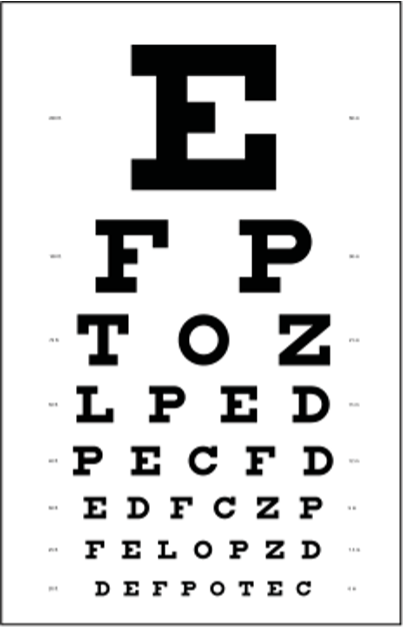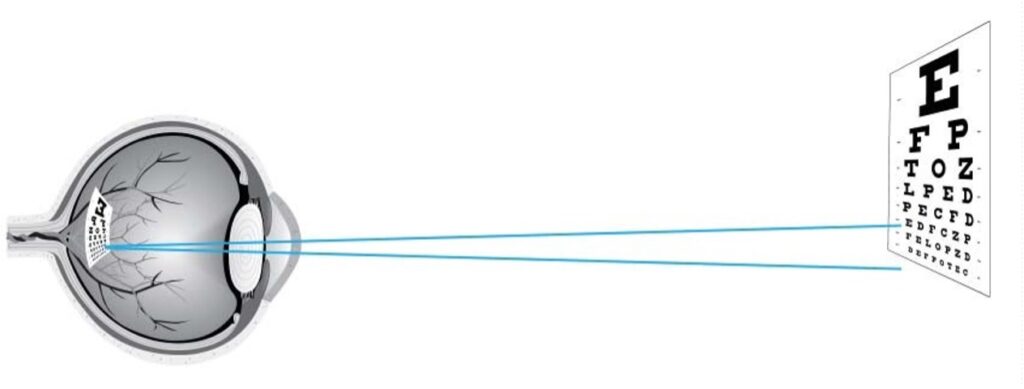Visual acuity is typically measured using a Snellen eye chart. Someone able to read line eight from a distance of 20 feet is considered to have ‘normal’ or ‘20/20’ vision (expressed in the metric world as 6/6).

The specialized letters in the chart are each created out of 25 pixels in a 5 x 5 grid that, on line 8, when viewed at a distance of 20 feet, are one sixtieth of a degree wide (or one minute of arc or minarc – written as: 1’), as measured from the viewer’s eye.

Reading out letters is an easy way for the ophthalmologist to confirm what the patient is able to see.
This simple and effective method of measuring eyesight has been used for over 150 years: since 1862 when Herbert Snellen, a Dutch ophthalmologist, first published the chart.
To quote from Wikipedia: The most significant innovation was his use of what he called optotypes, specially designed characters generated on a 5×5 grid, rather than using standard fonts. They provide a physical standard measure that could be used when printing the chart. Standard vision was measured as the ability to correctly read a line of optotype characters when they subtended 5 minutes of arc and were separated by 1 minute of arc.
Another approach would be to display two black lines, 1 minarc wide and 1 minarc apart. At 20 feet they should just be visible as two lines to someone with 20/20 vision, but at any further distance they would begin to look like one grey line, as the two black lines merged together. This is how lens charts work.
Let’s confirm this by looking at the physiology of the human eye.

The smallest light sensing rods (or photo receptors) in the central foveal region of the eye are actually around 0.4 minarc in diameter, optically speaking. The Nyquist-Shannon sampling theorem, borrowed from information theory, tells us that one needs to sample a signal at twice its highest frequency, i.e. its finest detail, in order to accurately reproduce it. Thus a collection of 0.4 minarc rods will indeed enable the eye to see detail just under 1 minarc wide.
For a broader and more comprehensive overview, we recommend the visual acuity entry in Wikipedia: https://en.wikipedia.org/wiki/Visual_acuity.
Paul Noble founded Activu Corporation (formerly Imtech) in New York in 1983, making it the first company to develop and sell video wall technology in the United States. Born in London, Paul attended the London Film School and had an early career in film and television before moving to the United States. He later went on to receive an MBA from Columbia Business School. He can be reached through Activu’s contact form here.

